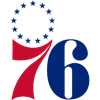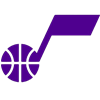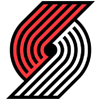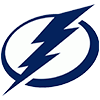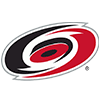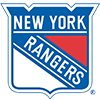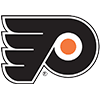There are just five series left to play in the 2022 MLB season. With only around 15 or 16 games remaining for every team, each game left on the schedule has a ton of significance. Small edges don't look so small any more.
If your player hits the bench for one game, he'll miss around six or seven percent of the remaining season, the equivalent of a minimum-length stay on the injured list at the start of the season. If your player has a minimum-length stay on the IL now, he'll miss two-thirds of the year, the equivalent of missing the first four months of the year.
When the importance of every individual game is blown up like it is now, deep dives in search of small advantages become more rewarding. One such dive that I've found useful is to take a look at each team's schedule, searching for teams that play the majority of their remaining games against the league's worst teams. If you split the league into tiers, you'll find a gap between the mediocre teams with win totals in the high sixties like the Diamondbacks and Giants, and the group of 12 unequivocally bad teams below them.
Eight teams still have three series remaining against those basement-dwellers, but the Mariners stand out as having all of their remaining games come against teams in that group. Here's Seattle's schedule the rest of the way: at Oakland, at Kansas City, vs. Texas, vs. Oakland and vs. Detroit. Not a
There are just five series left to play in the 2022 MLB season. With only around 15 or 16 games remaining for every team, each game left on the schedule has a ton of significance. Small edges don't look so small any more.
If your player hits the bench for one game, he'll miss around six or seven percent of the remaining season, the equivalent of a minimum-length stay on the injured list at the start of the season. If your player has a minimum-length stay on the IL now, he'll miss two-thirds of the year, the equivalent of missing the first four months of the year.
When the importance of every individual game is blown up like it is now, deep dives in search of small advantages become more rewarding. One such dive that I've found useful is to take a look at each team's schedule, searching for teams that play the majority of their remaining games against the league's worst teams. If you split the league into tiers, you'll find a gap between the mediocre teams with win totals in the high sixties like the Diamondbacks and Giants, and the group of 12 unequivocally bad teams below them.
Eight teams still have three series remaining against those basement-dwellers, but the Mariners stand out as having all of their remaining games come against teams in that group. Here's Seattle's schedule the rest of the way: at Oakland, at Kansas City, vs. Texas, vs. Oakland and vs. Detroit. Not a single one of those matchups is at all worrisome, so every fringy Mariner should become far more interesting.
The Mariners are not only the lone team with five very easy series remaining, they're also still fighting to lock up their first playoff berth since 2001, so there's reason to believe they'll keep trotting out their best lineups. That can't be said for the two teams who play four of their five remaining series against bottom-tier teams, the Cubs and Angels. Still, players on those teams definitely become more interesting given their easy schedules. Atlanta, the Guardians, the Mets, the Reds and the Twins all play three of their five remaining series against the league's weakest opposition, so their players see a boost as well.
Keep an eye out for similar sorts of small advantages over the next few weeks as you look to squeak out every possible point in the standings or to win a tight playoff matchup in a head-to-head league. Of course, don't forget to keep up with how well your players are performing, as well, as those small advantages merely alter a player's existing value rather than create value out of thin air. The following 10 players have notably raised or lowered their stock in recent weeks, including a pair of rookie pitchers, three rebounding veterans and a slugger having one of the best seasons of all time.
RISERS
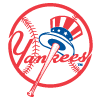 Aaron Judge, OF, Yankees: Yes, Judge featured in this column just over a month ago, but how can I not include the man who's about to break the American League home run record? Plus, since the date that article was published, he's only gone on to homer 13 times in 31 games while slashing .376/.496/.789, a line that's good for a 250 wRC+. The Yankees are understandably fully invested in his chase for the record and have maximized his chances of breaking it by batting him leadoff in each of the last eight games, boosting his fantasy value in the process. That's helped him reach 59 homers with over two weeks to play, putting the AL record very much within reach. What's most impressive, however, is that he's doing this in a year in which nobody else has even reached 40 homers. Here's how that dominance compares to the rest of the seasons in which someone has managed at least 59 homers:
Aaron Judge, OF, Yankees: Yes, Judge featured in this column just over a month ago, but how can I not include the man who's about to break the American League home run record? Plus, since the date that article was published, he's only gone on to homer 13 times in 31 games while slashing .376/.496/.789, a line that's good for a 250 wRC+. The Yankees are understandably fully invested in his chase for the record and have maximized his chances of breaking it by batting him leadoff in each of the last eight games, boosting his fantasy value in the process. That's helped him reach 59 homers with over two weeks to play, putting the AL record very much within reach. What's most impressive, however, is that he's doing this in a year in which nobody else has even reached 40 homers. Here's how that dominance compares to the rest of the seasons in which someone has managed at least 59 homers:
| Year | Player | HR | Next-Best Hitter | HR | Difference |
|---|---|---|---|---|---|
| 2001 | Barry Bonds | 73 | Sammy Sosa | 64 | 9 |
| 1998 | Mark McGwire | 70 | Sammy Sosa | 66 | 4 |
| 1998 | Sammy Sosa | 66 | Mark McGwire | 70 | -4 |
| 1999 | Mark McGwire | 65 | Sammy Sosa | 63 | 2 |
| 2001 | Sammy Sosa | 64 | Barry Bonds | 73 | -9 |
| 1999 | Sammy Sosa | 63 | Mark McGwire | 65 | -2 |
| 1961 | Roger Maris | 61 | Mickey Mantle | 54 | 7 |
| 1927 | Babe Ruth | 60 | Lou Gehrig | 47 | 13 |
| 1921 | Babe Ruth | 59 | Ken Williams/Bob Meusel | 24 | 35 |
| 2022 | Aaron Judge | 59 | Kyle Schwarber | 39 | 20 |
| 2017 | Giancarlo Stanton | 59 | Aaron Judge | 52 | 7 |
No one gets close to Babe Ruth during the years in which he practically invented the idea of trying to hit the ball over the fence, but Judge's dominance looks a lot more like peak Ruth than peak Bonds, McGwire or Sosa.
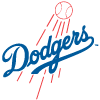 Justin Turner, 3B, Dodgers: It's possible Turner's playing time will dip down the stretch, as the Dodgers can afford to give the 37-year-old plenty of days off given that they've clinched the playoffs and have effectively clinched home-field advantage. Whenever he does start, though, you can expect a better performance than his season-long numbers indicate. Through the end of June, the veteran third baseman was slashing just .227/.298/.375, and given his age, a rebound certainly couldn't be taken for granted. Since the start of July, however, he's been in better than peak form, slashing .364/.436/.574. Zoom in on just his last 24 games, and the picture looks even better, as he's gone hitless just twice over that stretch while slashing .396/.462/.692 with five homers and 12 doubles. The Dodgers could still want to give Miguel Vargas more looks down the stretch, but they might also want to avoid disrupting Turner's hot streak as they prepare for the playoffs.
Justin Turner, 3B, Dodgers: It's possible Turner's playing time will dip down the stretch, as the Dodgers can afford to give the 37-year-old plenty of days off given that they've clinched the playoffs and have effectively clinched home-field advantage. Whenever he does start, though, you can expect a better performance than his season-long numbers indicate. Through the end of June, the veteran third baseman was slashing just .227/.298/.375, and given his age, a rebound certainly couldn't be taken for granted. Since the start of July, however, he's been in better than peak form, slashing .364/.436/.574. Zoom in on just his last 24 games, and the picture looks even better, as he's gone hitless just twice over that stretch while slashing .396/.462/.692 with five homers and 12 doubles. The Dodgers could still want to give Miguel Vargas more looks down the stretch, but they might also want to avoid disrupting Turner's hot streak as they prepare for the playoffs.
 Javier Baez, SS, Tigers: Given how bad Baez's start to his Tigers tenure was, and given how poorly Detroit's season has gone overall, you could certainly be forgiven for not giving him much thought in recent weeks. As recently as August 26, he was slashing a miserable .222/.263/.366. Since then, however, he's posted a .356/.397/.562 line in 20 games, going hitless just three times while hitting three homers. His .469 BABIP certainly has plenty to do with that line, but he's also managed a 9.6 percent barrel rate and 46.2 percent hard-hit rate, well above the 7.6 percent barrel rate and 35.2 percent hard-hit rate he'd managed up to that point. No one earns a .469 BABIP, but hitting the ball hard is the easiest way to earn a higher than average number. If Baez continues to hit the ball hard down the stretch while maintaining his 25.1 percent strikeout rate, a figure that comes in worse than average but would be the second-best mark of the shortstop's career, he could be undervalued heading into next season.
Javier Baez, SS, Tigers: Given how bad Baez's start to his Tigers tenure was, and given how poorly Detroit's season has gone overall, you could certainly be forgiven for not giving him much thought in recent weeks. As recently as August 26, he was slashing a miserable .222/.263/.366. Since then, however, he's posted a .356/.397/.562 line in 20 games, going hitless just three times while hitting three homers. His .469 BABIP certainly has plenty to do with that line, but he's also managed a 9.6 percent barrel rate and 46.2 percent hard-hit rate, well above the 7.6 percent barrel rate and 35.2 percent hard-hit rate he'd managed up to that point. No one earns a .469 BABIP, but hitting the ball hard is the easiest way to earn a higher than average number. If Baez continues to hit the ball hard down the stretch while maintaining his 25.1 percent strikeout rate, a figure that comes in worse than average but would be the second-best mark of the shortstop's career, he could be undervalued heading into next season.
 Yoan Moncada, 3B, White Sox: The season certainly hasn't gone how Moncada would have wanted. Injuries to his right oblique, right hamstring and left hamstring have conspired to limit him to 91 games, and he hasn't looked fully healthy even when not on the injured list, slashing just .217/.281/.351 on the year. His performance since his return from his most recent absence has been quite encouraging, however. In 11 games since his activation, he's slashed .333/.358/.569 with three homers, striking out just 22.2 percent of the time while posting a 12.5 percent barrel rate. He's hit second in all 11 games over that stretch after spending much of the season hitting in the bottom half of the order. While Moncada remains frustratingly inconsistent, in part due to his typically elevated strikeout rates, we know he has much more to offer than he's shown thus far, so it's easier to buy into his recent hot streak.
Yoan Moncada, 3B, White Sox: The season certainly hasn't gone how Moncada would have wanted. Injuries to his right oblique, right hamstring and left hamstring have conspired to limit him to 91 games, and he hasn't looked fully healthy even when not on the injured list, slashing just .217/.281/.351 on the year. His performance since his return from his most recent absence has been quite encouraging, however. In 11 games since his activation, he's slashed .333/.358/.569 with three homers, striking out just 22.2 percent of the time while posting a 12.5 percent barrel rate. He's hit second in all 11 games over that stretch after spending much of the season hitting in the bottom half of the order. While Moncada remains frustratingly inconsistent, in part due to his typically elevated strikeout rates, we know he has much more to offer than he's shown thus far, so it's easier to buy into his recent hot streak.
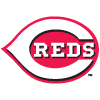 Nick Lodolo, SP, Reds: Back issues in the first half have limited Lodolo to 16 starts, and he's pitching for a team that's been out of the race seemingly since mid-April, but the rookie lefty is doing everything he can to put his name on the map down the stretch. He struck out nine batters in six shutout innings against the Rockies in his first start of September, and he's followed that up with a pair of 11-strikeout performances against the Brewers and Pirates. On the season overall, he's trimmed his ERA to 3.81, with his 3.29 xFIP and 3.14 SIERA suggesting that things could be even better. Those numbers reflect the fact that he's combined an elite strikeout rate (30.3 percent) with a roughly average walk rate (8.0 percent) and groundball rate (43.7 percent). Among pitchers who have thrown at least 80 innings this season, only Corbin Burnes and Shane McClanahan can beat all three of those rate stats.
Nick Lodolo, SP, Reds: Back issues in the first half have limited Lodolo to 16 starts, and he's pitching for a team that's been out of the race seemingly since mid-April, but the rookie lefty is doing everything he can to put his name on the map down the stretch. He struck out nine batters in six shutout innings against the Rockies in his first start of September, and he's followed that up with a pair of 11-strikeout performances against the Brewers and Pirates. On the season overall, he's trimmed his ERA to 3.81, with his 3.29 xFIP and 3.14 SIERA suggesting that things could be even better. Those numbers reflect the fact that he's combined an elite strikeout rate (30.3 percent) with a roughly average walk rate (8.0 percent) and groundball rate (43.7 percent). Among pitchers who have thrown at least 80 innings this season, only Corbin Burnes and Shane McClanahan can beat all three of those rate stats.
 Hayden Wesneski, SP, Cubs: Wesneski wasn't one of the most exciting prospects to move at the deadline when the Yankees shipped him out in exchange for Scott Effross, and he wasn't one of the biggest names to get called up in early September, either. The Cubs themselves didn't even seem all that excited by him, as they used him in long relief for his first two outings. Strong performances in those appearances earned him a start Saturday at home against the Rockies, and he made the most of that opportunity as well, striking out seven and walking none while allowing one run on three hits across seven innings. The 24-year-old righty has now thrown 15.2 major-league innings, posting a 2.30 ERA and 0.70 WHIP. He's backed those numbers up with a 30.5 percent strikeout rate and 3.4 percent walk rate. That's much better than his merely respectable prospect pedigree suggests, so don't expect him to remain quite this effective, but he's certainly worth a look down the stretch given the Cubs' friendly schedule.
Hayden Wesneski, SP, Cubs: Wesneski wasn't one of the most exciting prospects to move at the deadline when the Yankees shipped him out in exchange for Scott Effross, and he wasn't one of the biggest names to get called up in early September, either. The Cubs themselves didn't even seem all that excited by him, as they used him in long relief for his first two outings. Strong performances in those appearances earned him a start Saturday at home against the Rockies, and he made the most of that opportunity as well, striking out seven and walking none while allowing one run on three hits across seven innings. The 24-year-old righty has now thrown 15.2 major-league innings, posting a 2.30 ERA and 0.70 WHIP. He's backed those numbers up with a 30.5 percent strikeout rate and 3.4 percent walk rate. That's much better than his merely respectable prospect pedigree suggests, so don't expect him to remain quite this effective, but he's certainly worth a look down the stretch given the Cubs' friendly schedule.
FALLERS
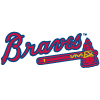 Matt Olson, 1B, Atlanta: Olson hasn't been too bad in his first season with his hometown team, though his .234/.319/.456 slash line (good for a 112 wRC+) still falls short of expectations. He owned a much better 130 wRC+ as recently as Aug. 27, but his performance since that date has been disastrous. In 18 games, he's grabbed just four hits while slashing .062/.164/.108. The slump came seemingly out of nowhere for the first baseman, who isn't reportedly playing through any sort of injury. Of particular concern is that his strikeout rate over that stretch has jumped to 30.1 percent, well above the 23.1 percent mark he'd managed up to that point. A jump in whiffs is a worry for anybody, but it's a particular issue for Olson, who's strikeout rate has oscillated wildly in recent years. In the shortened 2020 season, he struck out 31.4 percent of the time while posting a 105 wRC+; the next year, he slashed his strikeout rate nearly in half to 16.8 percent, leading to a 148 wRC+. The current high-whiff version of Olson isn't new, which makes it harder to believe in a quick turnaround.
Matt Olson, 1B, Atlanta: Olson hasn't been too bad in his first season with his hometown team, though his .234/.319/.456 slash line (good for a 112 wRC+) still falls short of expectations. He owned a much better 130 wRC+ as recently as Aug. 27, but his performance since that date has been disastrous. In 18 games, he's grabbed just four hits while slashing .062/.164/.108. The slump came seemingly out of nowhere for the first baseman, who isn't reportedly playing through any sort of injury. Of particular concern is that his strikeout rate over that stretch has jumped to 30.1 percent, well above the 23.1 percent mark he'd managed up to that point. A jump in whiffs is a worry for anybody, but it's a particular issue for Olson, who's strikeout rate has oscillated wildly in recent years. In the shortened 2020 season, he struck out 31.4 percent of the time while posting a 105 wRC+; the next year, he slashed his strikeout rate nearly in half to 16.8 percent, leading to a 148 wRC+. The current high-whiff version of Olson isn't new, which makes it harder to believe in a quick turnaround.
 Giancarlo Stanton, OF, Yankees: Heading into the season, I thought that both Judge and Stanton were underdrafted. While that's worked out quite well for me in Judge's case, I can't say the same in Stanton's. To be fair to him, his first half wasn't a problem, as his .237/.319/.516 slash line and 24 homers were plenty valuable enough in a world in which batting averages dropped across the board. The same can't be said about his second half, however. He went 0-for-10 in his first four games following the break before missing just over a month with Achilles tendonitis, and his results since his late-August return suggest that he still may not be fully healthy. He's grabbed just nine hits in 19 games, bringing his overall second-half slash line to a pitiful .114/.205/.203. His barrel rate has dropped to 8.3 percent over that stretch; that's still a solid number for most hitters, but it's less than half the 17.0 percent mark Stanton has managed through the Statcast era, something which backs up the idea that he's not fully healthy.
Giancarlo Stanton, OF, Yankees: Heading into the season, I thought that both Judge and Stanton were underdrafted. While that's worked out quite well for me in Judge's case, I can't say the same in Stanton's. To be fair to him, his first half wasn't a problem, as his .237/.319/.516 slash line and 24 homers were plenty valuable enough in a world in which batting averages dropped across the board. The same can't be said about his second half, however. He went 0-for-10 in his first four games following the break before missing just over a month with Achilles tendonitis, and his results since his late-August return suggest that he still may not be fully healthy. He's grabbed just nine hits in 19 games, bringing his overall second-half slash line to a pitiful .114/.205/.203. His barrel rate has dropped to 8.3 percent over that stretch; that's still a solid number for most hitters, but it's less than half the 17.0 percent mark Stanton has managed through the Statcast era, something which backs up the idea that he's not fully healthy.
 Charlie Blackmon, OF, Rockies: How much remains in the tank for the 36-year-old outfielder? Based on his performance down the stretch, the answer seems to be "not much." Blackmon was actually a sub-par hitter by wRC+ in both 2020 and 2021, but playing half his games at Coors Field kept his raw production high enough for him to be a fairly useful fantasy option. His 108 first-half wRC+ therefore represented the start of a potential bounceback season, but it wasn't to last. He owns a 46 wRC+ overall in the second half, including a .163/.212/.224 slash line (7 wRC+) in 13 games thus far in September. He's still making a respectable amount of contact, striking out 21.3 percent of the time since the break, but he's simply not hitting the ball very hard. His last barrel came back on August 16, and his 4.7 percent barrel rate on the season places him in the company of players like Amed Rosario, Ha-Seong Kim, Thairo Estrada and Elvis Andrus. The Rockies' final home game is Sunday against San Diego, so he probably doesn't need a spot on your roster after that point.
Charlie Blackmon, OF, Rockies: How much remains in the tank for the 36-year-old outfielder? Based on his performance down the stretch, the answer seems to be "not much." Blackmon was actually a sub-par hitter by wRC+ in both 2020 and 2021, but playing half his games at Coors Field kept his raw production high enough for him to be a fairly useful fantasy option. His 108 first-half wRC+ therefore represented the start of a potential bounceback season, but it wasn't to last. He owns a 46 wRC+ overall in the second half, including a .163/.212/.224 slash line (7 wRC+) in 13 games thus far in September. He's still making a respectable amount of contact, striking out 21.3 percent of the time since the break, but he's simply not hitting the ball very hard. His last barrel came back on August 16, and his 4.7 percent barrel rate on the season places him in the company of players like Amed Rosario, Ha-Seong Kim, Thairo Estrada and Elvis Andrus. The Rockies' final home game is Sunday against San Diego, so he probably doesn't need a spot on your roster after that point.
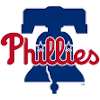 Noah Syndergaard, SP, Phillies: The Phillies knew they weren't getting anything close to an ace when they acquired Syndergaard from the Angels at the deadline, and they didn't pay anything close to an ace price to get him, but they surely thought they were getting more than this. Through his first eight starts for his new team, he's stumbled to a 4.79 ERA. His primary problem seems to be his lack of strikeouts. The 18.9 percent strikeout rate he managed in Los Angeles was already unimpressive, but his 13.1 percent mark since the move is bordering on untenable. Things are only getting worse in that regard, as he hasn't topped three strikeouts in any of his last three starts, a fact that looks even worse considering that he faced the Giants, Nationals and Marlins over those outings. The Phillies are seemingly getting worried about his performance, as he'll move into a piggyback role with former Mets teammate Zach Wheeler for now, as Wheeler is not yet ready for a full workload as he returns from forearm tendinitis. That means Bailey Falter has officially moved ahead of Syndergaard on the rotation depth chart.
Noah Syndergaard, SP, Phillies: The Phillies knew they weren't getting anything close to an ace when they acquired Syndergaard from the Angels at the deadline, and they didn't pay anything close to an ace price to get him, but they surely thought they were getting more than this. Through his first eight starts for his new team, he's stumbled to a 4.79 ERA. His primary problem seems to be his lack of strikeouts. The 18.9 percent strikeout rate he managed in Los Angeles was already unimpressive, but his 13.1 percent mark since the move is bordering on untenable. Things are only getting worse in that regard, as he hasn't topped three strikeouts in any of his last three starts, a fact that looks even worse considering that he faced the Giants, Nationals and Marlins over those outings. The Phillies are seemingly getting worried about his performance, as he'll move into a piggyback role with former Mets teammate Zach Wheeler for now, as Wheeler is not yet ready for a full workload as he returns from forearm tendinitis. That means Bailey Falter has officially moved ahead of Syndergaard on the rotation depth chart.















